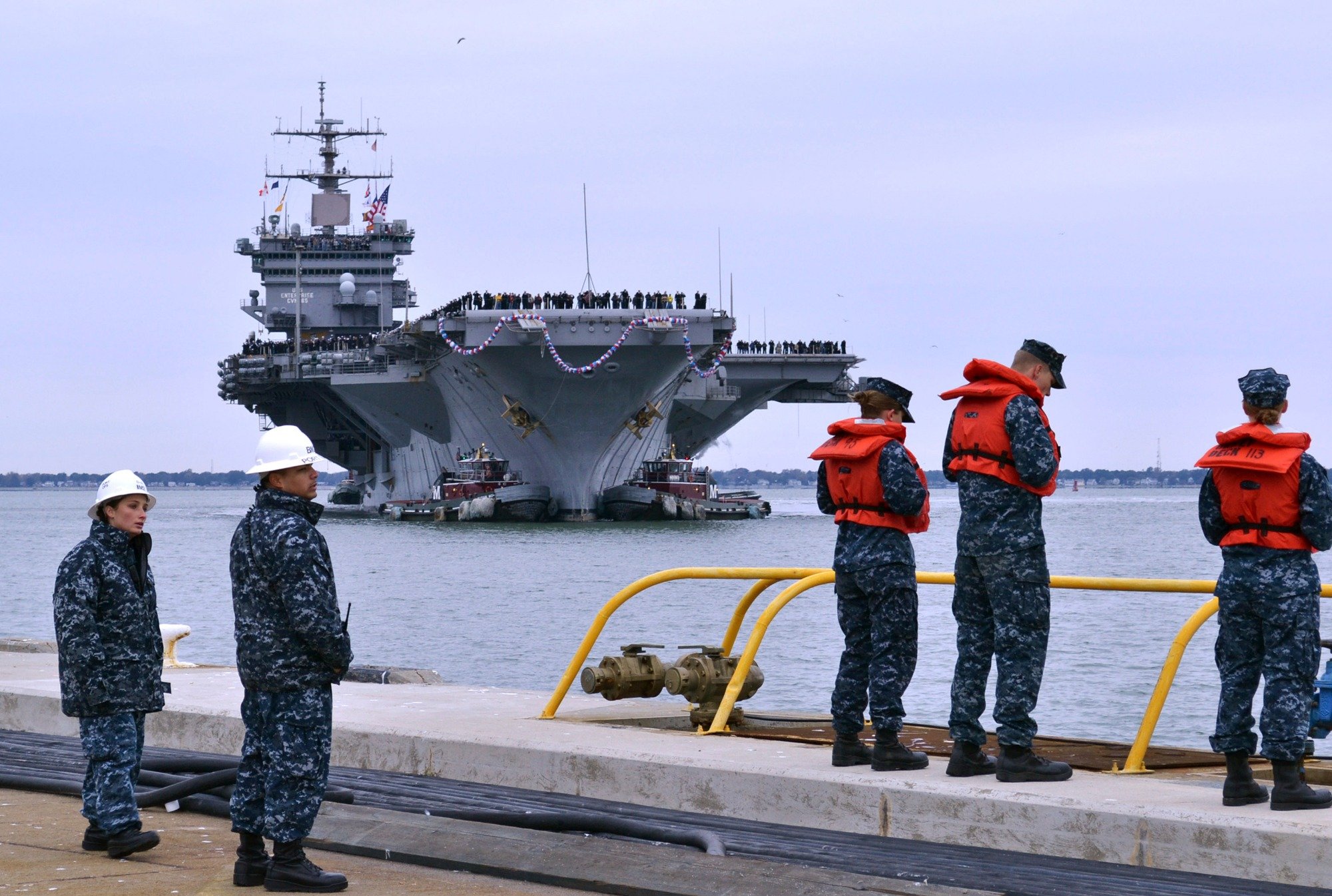A Navy Nuclear Aircraft Carrier Was Nearly Destroyed by A Massive Inferno
In 1969, a devastating fire erupted on the USS Enterprise, the first nuclear-powered aircraft carrier, as it prepared for a Vietnam deployment. The blaze began when the exhaust from a huffer aircraft starter overheated a Zuni rocket, triggering multiple explosions.
What You Need to Know: In 1969, a devastating fire erupted on the USS Enterprise, the first nuclear-powered aircraft carrier, as it prepared for a Vietnam deployment. The blaze began when the exhaust from a huffer aircraft starter overheated a Zuni rocket, triggering multiple explosions.

-Captain Kent Lee’s quick actions helped, but successive detonations tore large holes in the flight deck, ruptured a fuel tank, and disabled firefighting equipment. The inferno killed 27 crew members, injured many more, and destroyed 15 aircraft.
-Following a significant overhaul, the resilient “Big E” continued its service, cementing its place as a storied asset in the U.S. Navy.
The USS Enterprise Fire: Inside the 1969 Tragedy That Shook the U.S. Navy
When the USS Enterprise erupted in flames before deploying to Vietnam in the 1960s, this incident became one of the worst not-combat tragedies to strike an American aircraft carrier. A rocket accidentally ignited on the warship’s flight deck triggering a domino effect onboard. While the flames were eventually brought under control, twenty-seven crewmen were killed and many more injured. The Navy also lost fifteen airframes in the aftermath of the incident.
An Overview of the USS Enterprise
As the first nuclear-powered carrier to ever set sail across the globe, the USS Enterprise has a legendary connotation. The warship was preceded by the USS Enterprise (CV-6), the sixth aircraft carrier to be introduced to service with the U.S. Navy in the mid-1930s.
Both carriers were given the nickname “Big E.” Measuring nearly 1,125 feet in length, CV-6 certainly earned this moniker. In fact, the USS Enterprise remains the longest naval ship ever constructed. The hefty carrier was intended to lead a class of six nuclear-powered ships, however, budgetary issues led to the cancellation of her sister ships.

Enterprise is also the only carrier to feature more than two nuclear reactors. The Big E is equipped with an eight-reactor propulsion design. Additionally, she uniquely incorporated four rudders rather than two like other aircraft carrier classes. In terms of defense and armament power, the carrier was installed with a Basic Point Defense Missile System to be able to launch Sea Sparrow missiles.
The carrier also featured a phased radar system. Throughout her service history, Enterprise proved to be a valuable asset to the Navy. She notably achieved several milestones, including becoming the first carrier to launch an aircraft with a launch bar.
The Fire
Enterprise’s promising formidability made the infamous 1969 fire all the more devastating. When the warship was operating off the coast of Pearl Harbor, Hawaii, a junior airman noticed that a huffer (MD-3A) aircraft starter unit was blowing hot exhaust very close to the warhead of a Zuni rocket.
Unfortunately, his warnings were either not heard or severely misunderstood. Ultimately, the huffer’s exhaust temperature of more than 500 degrees was enough to ignite the rocket’s warhead. After the first Zuni exploded, three others followed suit causing a huge hole in the flight deck of the carrier.

As detailed by the Navy, the skipper of Enterprise tried to rectify the situation after the first Zuni exploded: “Captain Kent Lee, future vice admiral and commander of Naval Air Systems Command, promptly steered so the wind blew smoke and flames off the flight deck.
However, after three minutes, a bomb on a Phantom exploded, blowing an even bigger hole in the flight deck, about eight by seven feet, and spreading burning fuel into the ship down to the O-2, O-1, and 1st Deck levels.
This explosion severed fire hoses and rendered the closest fire-fighting foam units inoperative. This was followed by two more 500-pound bomb explosions.” In all, eighteen explosions rocked the carrier, and the large hole created onboard ruptured a 6,000-gallon fuel tank causing a massive fireball.
Despite this tragic incident, the USS Enterprise would continue to serve the Navy following an extensive rehaul at Pearl Harbor.
About the Author: Maya Carlin
Maya Carlin, National Security Writer with The National Interest, is an analyst with the Center for Security Policy and a former Anna Sobol Levy Fellow at IDC Herzliya in Israel. She has by-lines in many publications, including The National Interest, Jerusalem Post, and Times of Israel. You can follow her on Twitter: @MayaCarlin.
Image Credit: Creative Commons and/or Shutterstock.


